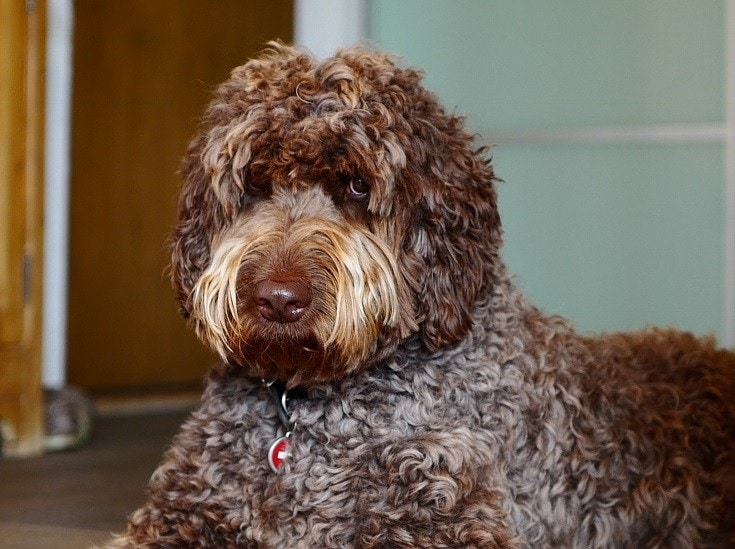10 Incredible Labradoodle Facts You Need To Know!
Updated on

Labradoodles are a wildly popular and relatively young dog breed, instantly identified by their signature curly coat. As a newer breed, few people know much about the Labradoodle, but we’re here to change that. In this article, we’ve compiled the most interesting facts you need to know about this loveable crossbreed. Check out the details below!
The 10 Labradoodle Facts
1. Labradoodles Are a Cross Between Labs and Poodles
Labs and Poodles are two of the most popular dog breeds, and both are great family dogs. The Poodle is sometimes considered the smartest dog breed, and both that intelligence and their non-shedding, curly coat pass down to the Labradoodle. On the Lab side, Labradoodles get a bright, friendly, people-pleasing nature with an extra shot of intelligence.

2. Labradoodles Shed Less Than Other Dogs
No dog is 100% hypoallergenic, but Labradoodles are very close. Bred as a less allergenic guide dog, Labradoodles are super easy to maintain and won’t leave fur all over your furniture. Sometimes you’ll hear them called “non-shedding,” but that’s a tad disingenuous—they do shed, but far less than other dog breeds. They still need regular brushing to stay presentable and healthy, like any dog.
3. They’re a Recent Breed
Labradoodles were first bred in Australia in the 80s to serve as hypoallergenic guide dogs, but some say the breed dates back to the 50s, albeit less popular at the time. Since then, they’ve become great family dogs and service animals. An infamous side effect of their crossbreeding is some nasty health issues that seem to randomly crop up.

4. They’re Very Active
Labs and Poodles are both active breeds, and their offspring is no exception. Labradoodles need at least an hour of exercise per day, which counts walking around the block, swimming in the pool on a hot day, or just following you around the house like a curly-haired shadow. Neglecting to give your pup this physical stimulation can lead to anxiety and other negative health effects, so stay active to keep the doggy blues away!
5. Labradoodles Are People Dogs
The Labradoodle is a born people-pleaser, and they love nothing more than to spend time with their family. This makes training them a cinch, even if they do get a little hyper and distractible. They have a strong loyalty instinct but not a mean bone in their body, which is perfect for families with kids. Labradoodles will even give strangers a chance, and they warm up quickly with lots of love.

6. The AKC Doesn’t Recognize Labradoodles
The American Kennel Club doesn’t officially recognize Labradoodles because they’re a crossbreed between two other breeds. Even if the Lab and Poodle are recognized by the AKC, the Labradoodle has no official breed standards within the US. Globally, the Australian Labradoodle Association is the biggest organization that formally recognizes Labradoodles as a breed.
7. Labradoodles Make Poor Guard Dogs
Labradoodles have open, friendly personalities, and they can even get along with complete strangers with a little encouragement. Obviously, that means they’re not likely to bark at home intruders, much less pose a threat. They’re simply way too gentle and personable to ever serve as a watch or guard dog.

8. They Make Excellent Service and Therapy Dogs
With an irresistibly affectionate character, Labradoodles are often chosen as service and therapy animals. They’re easy to train, love to stay with you, and are intelligent enough to learn complex commands. That makes them great companions when you’re out and about and at home, whether you’re blind or have other special needs.
9. Labradoodles Learn Fast
The Lab and Poodle are both very smart, and the Labradoodle is smart as a whip too. They love to please you and don’t have a trace of stubbornness, so you’ll have an easy time training them. They can be taught the most basic commands with ease and even more complex tricks with enough patience and treats.

10. Labradoodles Come in All Sizes
Just like Poodles, Labradoodles come in several different sizes to fit any lifestyle. Depending on the Poodle parent’s size, a Labradoodle can come in miniature, small, or medium sizes. At most, they grow as big as 24 inches at the shoulder, which is pretty standard. Mini Labradoodles average 14 to 16 inches, while the small ones are only 17 to 20 inches or so when fully grown.
- Related Read: Do Labradoodles Smell More Than Other Dogs?
Conclusion
Labradoodles are an energetic, lovable, and intelligent crossbreed that stole its way into our hearts. They barely shed at all, too, which makes them perfect if anyone in the home has allergies that rule out other breeds.
See also:
Featured Image Credit: Josh Borup, Pixabay











